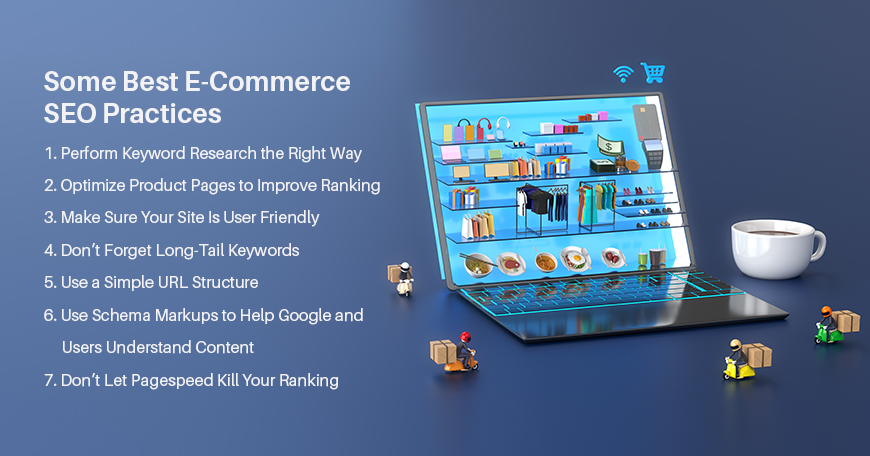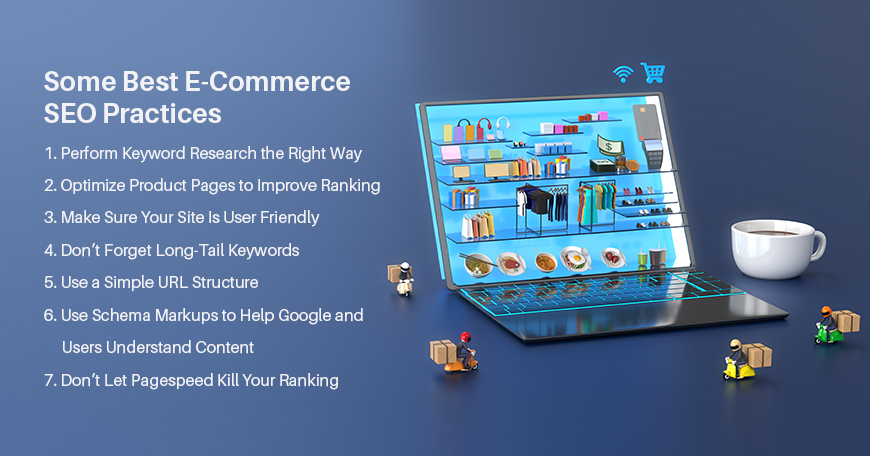If you’re a website that deals with retailing products and looking forward to reaching out to the wider range of customers possible, owning a well-optimized properly navigated e-commerce website is the best thing you can have. eCommerce SEO is one of the major digital marketing services in Australia and can help businesses in driving more traffic and increasing sales in a significant way.
There are several benefits of having a great e-commerce website that is fully optimized. This is very helpful in understanding the basics about your customers, like, demographics which includes the location of your customers, their age groups, and how did they reach you.
What is Ecommerce SEO, how does it Help Businesses to Sell More?
Before getting into details, it is very important to understand that what is Ecommerce SEO and how it can be a game-changer when it comes to increasing the sales of your business. Well, eCommerce SEO is nothing but a properly outlined strategy that can help online retailers or businesses rank higher in the search engine results. A fully optimized and perfectly designed website which also have fresh and good-quality content will definitely rank higher in search engines like Google, Bing etc., thus increasing the visibility and traffic on your online store.
To be more precise, Ecommerce SEO focuses on optimizing your website, which drives more traffic to your website and simplifies the process of getting leads and conversions. Though, being distinct from SEO that’s done for content-focused websites, the eCommerce SEO process is far more than just adding keywords, web content optimization, preparing fresh blog posts, and obtaining links. You need to have a clear understanding of how search engines work and what they appreciate.
Having proper knowledge of how SEO for an e-commerce website is done and what are its benefits, keeping Google’s guidelines in mind, considering buyer intent, and executing it well is all that an online eCommerce store owner needs to know in order to attain success in the business.
Some best E-Commerce SEO Practices

E-commerce for SEO is neither a very easy thing nor an overnight process to achieve success for your online business. There are millions of online eCommerce websites available. You have to be extraordinary as a website owner to stand out from your competitors.
Although it may seem like a huge challenge when it comes to improving your SEO rankings, you can easily adapt best practices and give a positive start to the process. Over time, this will increase your chances of business exposure and you will see great improvement in organic leads and customers.
What are the best SEO practices when it comes to eCommerce? Well, you might want to start with the following basic things:
- Navigation and improved UI
- Internal links for better customer engagement
- Adding a website to google analytics and Google webmaster
- Submitting the sitemap
- De-clutter the website
- Preparing fresh and engaging content
- Add alt text to the images
However, a lot more can be done to improve the performance and presence of your website. Below is our list of SEO best practices for eCommerce that you can implement today.
1. Perform Keyword Research the Right Way
Performing keyword research correctly is one of the simplest ways to optimize your e-commerce site. Having a set of meaningful keywords that are derived from thorough research on the user/finder’s intent can turn out to be the game-changer. There is a term widely used – ‘Keyword intent’. This is nothing but the intention behind a search query. One can recognize it by looking at the exact phrases and terms that people use while looking for any item online.
2. Optimize Product Pages to Improve Ranking
Who doesn’t want to attract and acquire new customers? Being an online website owner, you need to look at your on-page user optimization and make sure that all the pages of your website are fully SEO optimized. It is very important because this is how you can achieve a higher ranking, followed by getting better organic traffic and increased conversions.
When it comes to SEO for e-commerce sites, not all areas need full optimizing. Below are the major areas that you can focus on to achieve great results as an online retailer –
- product descriptions
- image alt tag optimization,
- Feature reviews of your products
3. Make Sure Your Site Is User Friendly
User experience is one of the major aspects that help in getting your website to a better position. You can enhance the user experience (UX) by having a good and attractive design. This makes the aesthetics appear more visually appealing.
4. Don’t Forget Long-Tail Keywords
A long-tail keyword is a term that normally has low search volume but can still meet the criteria to significantly improve the performance of your website. The conversion rate of such keywords are also better they’re an accurate match for what the user/searcher is looking for. Long-tail keywords are typically responsible for offering higher traffic.
5. Use a Simple URL Structure
When the URL structure of your e-commerce website is kept simple, it becomes a lot easier to share products on social media and also on other relevant websites. It is a very useful SEO practice for eCommerce websites, as it provides more relevant data for search engines.
6. Use Schema Markups to Help Google and Users Understand Content
Schema Markups are always a good choice to improve the SEO of a website. When schema markup is used for a website, it produces rich snippets. This becomes a way for search engines and presents more information about special items in the search results.
7. Don’t Let Page Speed Kill Your Ranking
Website’s page speed plays a significant role in improving the performance of the website. Page load time indicates the total time it takes when an internet user is trying to open your web page and is a very important ranking factor too. Few steps you should follow to reduce the page load time of the website –
- Have meaningful content on the website for your server to handle.
- Minimized java scripts and CSS to avoid slowing download times.
- Image optimization to reduce excessive load time
Conclusion
Driving more traffic to your eCommerce website and improving its performance is not too easy, but by adopting a few tried and tested SEO practices, you can surely attain great success. Just follow the above steps to get the most out of your eCommerce website.


